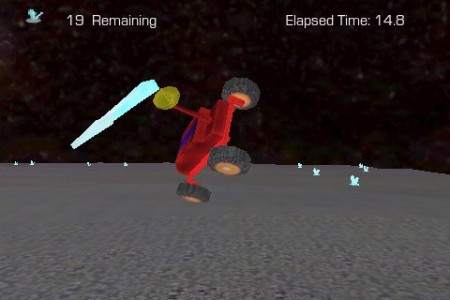Chicago (IL) – In character, Apple’s allowed a different route than other companies like Sony and Nintendo. Rather than licensing Nvidia’s PhysX technology and exposing it to developers via the
iPhone SDK, they’ve allowed several independent developers who created
PhysX-enabled iPhone games into their App Store. And while you can’t overlook how the advanced physics comes at the expense of graphics
quality, their use does serve as testbed example that iPhone too can run the Nvidia PhysX
engine.
While PhysX was originally designed for desktop GPUs, its proving itself to be far more versatile. Though still not officially licensed to Apple and their iPhone SDK, Apple’s relationship
with Nvidia may result in the inclusion of the PhysX engine in future
versions — especially when the next-generation iPhone
comes out this summer with its rumored follow-on PowerVR GPU that could be
well suited to support hardware acceleration of physical calculations via
iPhone-optimized PhysX drivers.
The first game, Big Fun Racing(App Store link), is a stunt racing game that has you racing against time to collect coins in
various stunt levels. It successfully employs the PhysX engine to enable really great driving physics. Another, called SpaceRace(App Store link), is a low gravity racer that uses the PhysX engine to give you the feel of
real Lunar gravity enabling low-G racing and crazy low gravity
stunts. The smash-up game, Debris(App Store link),
is perhaps the best example of how the PhysX technology can enhance
realism. The game puts you in charge of controlled demolitions. You
basically plant bombs and tap the detonator to deliver the carnage —
just the thing to showcase the PhysX engine’s power.
While all
of these titles sport notably realistic interactions and movement, you’ll immediately notice sub-par
graphics in terms of the number of object on screen, their animation,
textures and limited complexity in the 3D world. This suggests that calculations required in PhysX-enabled game for the iPhone platform eat up a
significant amount of CPU time, which only leaves the CPU with less time to
render the actual graphics. This may change when the next iPhone
arrives with its newer GPU rumored to support software GPGPU acceleration, which would definitely help accelerate PhysX-related calculations.
Nvidia’s
middleware physics engine allows game developers to avoid writing their
own code to handle the complex physics interactions in games. While the
technology allows game makers to accelerate physics interactions via a
PhysX PPU (physics processing unit) or a CUDA-enabled GPU, the current
iPhone and iPod touch lack those chips. This means the aforementioned games employ the PhysX binary code on the device’s CPU, delivering its
realistic physics movement, but without actually accelerating the calculations
in hardware.
Nvidia has been aggressively
pushing their PhysX technology to console and game makers in past months.
The company released public beta of PhysX driver last summer, followed by enabling the technology on ATI Radeon 3870 graphics card and efforts to support PhysX on all ATI Radeon chips. In fact, Nvidia touted physics as its key differentiator — having released a huge WHQL driver update
that added PhysX acceleration for all 8-, 9- and 200-series of graphics
cards with at least 256 MB of memory.
These efforts paid off as game
makers like THQ paid notice,
pledging to incorporating physics support in upcoming games for both PCs and
consoles. And, it didn’t take long until console makers realized the
potential of Nvidia’s PhysX platform. Last month, both Sony and Nintendo
have signed a license agreement that allows the two console makers to
offer PhysX SDK to registered Playstation 3 and Wii developers who can
now use the binary version of the PhysX SDK in their games.

SPACE RACE

BIG FUN RACING

DEBRIS







